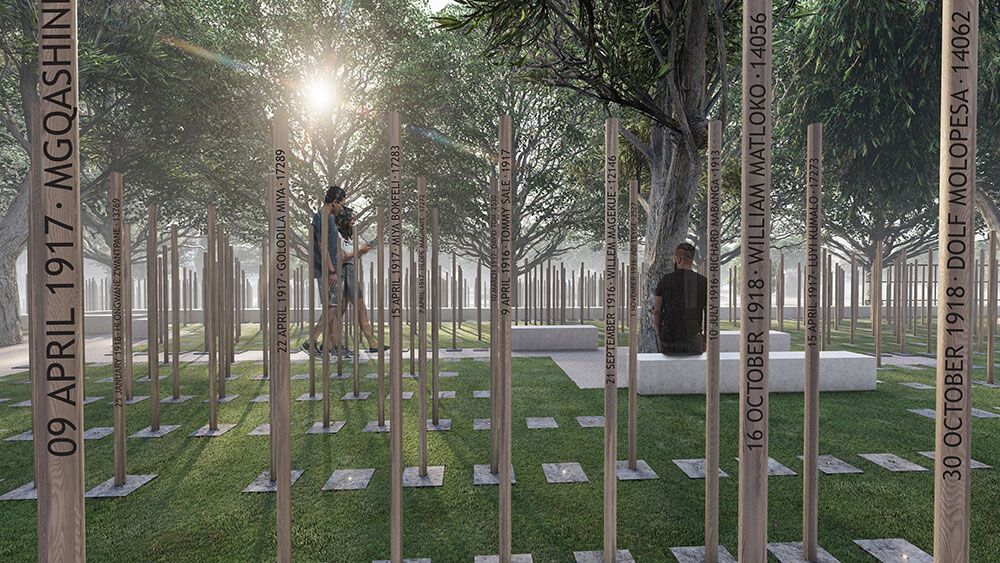04 August 2025
The Punjab Registers: Finding Forgotten Soldiers of the First World War
CWGC’s first ever funded PhD student, George Williams from the University of Greenwich, explains his groundbreaking work on forgotten Punjabi soldiers of the First World War.
The CWGC is supporting several research projects with external partners in response to the Commission’s 2022 report on historical inequalities in commemoration.
These projects are designed to help the Commission better understand its history, correct mistakes of the past, as well as search for the names of those who have not been commemorated.
Keep reading to the end, as there is a great opportunity for you to become involved in this project!
Forgotten Punjabi Soldiers of the First World War
George Williams, University of Greenwich
In this blog, I would like to share with you the work that I have been doing on forgotten Punjabi soldiers of the First World. However, before getting into the actual project, a little bit of history to set the background on India, and specifically the Punjab’s role in the First World War.
India, Punjab and the First World War
During the First World War, Undivided India, (Britain’s Indian Empire – see figure 1.) comprised of the countries we know today as Bangladesh, India, Myanmar, Nepal and Pakistan.

Figure 1. Undivided India c. 1909 (Source: The Imperial Gazetteer of India, Vol XXVI Atlas, plate 20.)
This vast territory provided 1.5 million men to the Imperial war effort, more than all of the white dominion nations combined.
By far the largest supplier of men for the war effort was the province of the Punjab located in Northwest India (see figure 2).

Figure 2. The Punjab. Source: The Imperial Gazetteer of India, Vol XXVI Atlas, plate 32.
300,000 Punjabi men left their homes, families, and friends to go and fight across the globe in East Africa, Egypt, France, Gallipoli, Mesopotamia, Persia, Palestine and Salonika. Officially, nearly 13,000 Punjabi men were to give their lives during the war.
Part of my work is devoted to identifying Punjabi soldiers who have not been commemorated in the CWGC records of war dead.
In the image below (see figure 3), we know from the accompanying description that some Hindu soldiers of the Indian Army Labour or Supply and Transport Unit are preparing to cremate a dead comrade in Baghdad, Mesopotamia.
We have no details of who the dead man is, who his comrades are, the date on which it happened, and there is even ambiguity as to what regiment or unit the soldiers came from.

Figure 3. Hindus of an Indian Army Labour or Supply and Transport unit prepare to cremate the body of a dead comrade in Baghdad. Source: Imperial War Museum HU 104981
This is the challenge: the historical record is incomplete. We only catch glimpses of the names of ordinary Indian army soldiers through acts of bravery or sacrifice captured in official and regimental histories or through the mail censor reports, now preserved at the British Library.
The Punjab Registers
A collection of Punjab war service records, colloquially referred to as the ‘Punjab Registers’ (see figure 4.), were recently rediscovered at the Lahore Museum, Pakistan.
Thanks to the pivotal work of the United Kingdom Punjab Heritage Association (UKPHA), who secured access to these war records and made copies available for study, we finally have the opportunity to change what we know about these soldiers and their experiences of war.

Figure 4. The Punjab Registers. Photo courtesy Gavin Rand.
Produced sometime between 1919 and 1920 these thirty-four volumes cover the twenty-eight British districts of the Punjab, with around 26,000 pages, containing the service records of over 320,000 individuals who served during the First World War.
We know, from notes in some of the registers, that the records were compiled at a local level by Zamindars and Lambardars (village heads or leaders) in the vernacular language and then translated into the English records preserved at Lahore.
Ostensibly, according to some of the local war histories written by colonial officials, these records were created as a commemoration of war service. However, my research indicates the registers were produced as a means of administering and controlling the lives of demobilised men.
The colonial authorities were anxious over the return of hundreds of thousands of men, trained in violence and having been exposed to societies much freer than their own, to possible hardship and unemployment.
To meet this challenge, they established local Indian Soldiers' Boards to deal with any resentment that might arise as well as forestall any potential for anti-government protests. In order to do this one of the first functions of these boards was to create local records of war service.
These service records are organised by district and village, so, just like the colonial officials, we are able to see right down to the places where these men came from. Figure 5 is one of the pages from the register for the district of Jullundur.

Figure 5. Extract from the register for Jullundur district, Punjab. Image courtesy of UK Punjab Heritage Association.
The registers contain a wealth of information. Starting from the left we have the name of the village, Jandu Singha. Followed by the individual’s name, Rala Singh, his father’s name, Subedar (Major) Badhawa Singh, his caste or tribe, Jat (indicating they were from a family of cultivators), and his regiment, 22nd Punjabis and rank, a Subedar.
From this we can see that this was a family with a military tradition, with both father and son serving as soldiers, and given their ranks quite successfully too.
We also know that Rala had not received any rewards or medals from the war and, as there are no other register entries indicating his death, it is likely he returned to his village after the war.
On other pages there are details of the rewards in land, prize money or pensions that the colonial authorities granted to some of returning servicemen or families of the dead.
If we take a look at serials 3, and 4 we have two ‘real’ brothers, Udham and Sadhu Singh, also of the 22nd Punjabis and whose father (serial 2), Gurdit Singh was also a Subedar in the same regiment. Further down the page, at serial 7, we have Ujagar Singh who died of influenza in his village whilst on leave.
Discovering the Forgotten Punjabi Soldier
The Centenary of the First World War brought about greater awareness of undivided India’s participation in the war. This led to a number of prominent Indian commentators to ask questions about how their nation’s participation in the First World War and how it has been commemorated.
Speaking in 2014, at an Asian literature festival, Lord Bhikhu Parekh, claimed India’s army had suffered 50,000 deaths and 10,000 missing. The following year, 2015 Shashi Tharoor, an Indian politician, author and former diplomat, began to ask why history had almost forgotten about the sacrifices made by Indians.
And, in 2017 India’s High Commissioner to the UK, Yashvardhan Kumar Sinha, and the United Service Institution of India’s Centre for Armed Forces Historical Research, highlighted the case of the unremembered from the Indian Labour Corps.
These concerns prompted me to ask what the Punjab Registers might tell us about who had not been commemorated.
With further support from the UKPHA, the registers were digitised and transcribed into spreadsheets. This has allowed me to undertake a more in-depth analysis of the information contained in the registers.
As a result, I have been able to identify nearly 16,000 men who lost their lives during the First World War.
Using a randomly selected sample of 213 casualties from the registers the details were cross-checked against the CWGC’s war dead records. This revealed that 162 of the casualties (nearly two thirds) could not be traced in the CWGC’s records. Additional work on a single district, Ferozepur, which had 462 casualties confirmed a similar level of omissions.
These results suggest that the Punjab Registers contain the names of 8,000 to 9,000 individuals who have not been commemorated by the CWGC.
Work has now moved to cross-checking all of the casualties from the Punjab Registers with the CWGC’s records. I have developed a scoring system to provide a better understanding of the correlation between an individual’s information in the registers to the information held in the CWGC’s records.
This is now being used by a team of CWGC volunteers who are undertaking the task of cross-checking all of the 16,000 casualties from the registers. The volunteers have been working on the registers for the Ferozepur district.
Out of the 462 casualties listed, around 70% (over 300) have not been traced in the CWGC records. The CWGC will be undertaking further analysis of these results, and in due course, it is hoped these non-commemorated soldiers will be added to their records.
Help us identify more Punjabi soldiers of the Great War
And this is where you can become involved.
If you would like to hear more about how you can help identify Punjabi soldiers of the First World War who have not been commemorated by the CWGC, then please email john.burke@cwgc.org.
All that is required is for you to have access to a computer and a basic knowledge of Excel. No other special skills are required, as full training and support will be given.
Further reading
There is a growing body of literature on the Indian Army of the First World War, and these four books provide an accessible introduction to the subject:
- Andrew T. Jarobe, Indian Soldiers in World War 1: Race and Representation in an Imperial War.
- David Omissi, Indian Voices of the Great War Soldiers’ Letters, 1914-1918.
- George Morton-Jack, The Indian Empire at War from Jihad to Victory: The Untold Story of the Indian Army in the First World War.
- Kaushik Roy, Indian Army and the First World War 1914-1918.
About the author
George Williams is a PhD student at the University of Greenwich. A former Ministry of Defence civil servant and university administrator George was awarded a BA in War Studies in 2018 and a MA in Imperial History in 2020, both from the University of Kent.
He also presented a paper in 2022 on “Recovering and Commemorating the Indian Army of the First World War”, as part of the British Library’s Unearthing the South Asia Collections Seminars. George’s current research work is funded by the Commonwealth War Graves Commission and supported by the UK Punjab Heritage Association (UKPHA).
Contact: g.a.williams@greenwich.ac.uk.
Visit us and our partners to learn more about the Punjab Registers and India in the World Wars
This summer, we invite you to join us and partners including UKPHA across the UK at select events celebrating the Indian Army's contribution to World Wars:
See more Non-Commemoration Programme updates
The CWGC Non-Commemoration Programme has a clear mandate: to ensure all those who died in the world wars, no matter where they were, where they died or how they died are remembered equally.
Our historians work with global and state archive materials to direct their research. This allows us to yield important information – we can identify missing names, understand casualty numbers, and identify likely burial locations, as well as reinstate abandoned graves.
Discover more about the Non-Commemoration Programme and our latest updates today.

Get the latest updates on the incredible work of the Non-Commemoration Programme team.
Non-Commemoration
